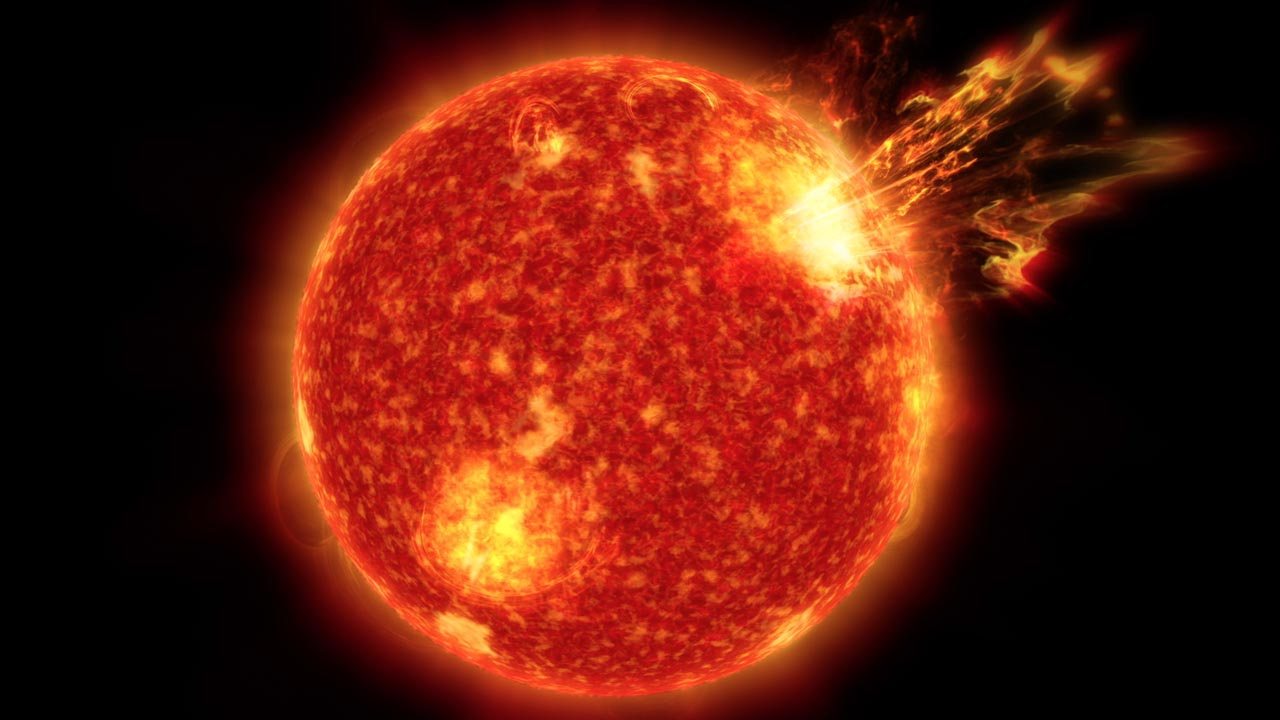A solar storm is likely to hit the Earth today after high-speed solar winds erupted from a ‘hole’ in the Sun’s surface, according to several media reports. The National Oceanic and Atmospheric Administration (NOAA) forecasters in a bulletin stated that there is a slight chance of minor G1-class geomagnetic storms today as Earth enters a high-speed stream of solar wind. The gaseous material is flowing from a southern hole in the Sun’s atmosphere, as per the NOAA. But what does this mean? How will Earth be impacted? Here’s what you need to know What about this ‘hole’ in the Sun’s surface? As per Space.com, these holes are areas in the Sun’s upper atmosphere where its “electrified gas” (or plasma) is less dense and also cooler. As per Indiatimes, the Sun’s magnetic field lines are at these holes. Instead of looping back, these lines beam outwards in space, even towards Earth – at the incredible speed of 2.9 million kilometres per hour. How are geomagnetic storms caused? NASA defines a geomagnetic storm as a major disturbance of Earth’s magnetosphere which occurs when there is a strong exchange of energy from the solar wind in the space above Earth. The K-index, which measures the magnetic field around the Earth, designates solar storms from weakest to strongest – from G-1 to G-5. As per Hindustan Times, a solar storm hitting the Earth can sever radio communications and affect the power grid for hours, or in the worst case, even days. How worried should we be? Not very.
The G-1 solar storm, which is expected to hit Earth, is considered relatively harmless.
However, it could still cause power grids to fail, minor disruptions to satellites and impact migratory animals, as per Mint. As per CNBC, satellites orbiting the Earth reported an explosion in the northeastern area of the Sun at around 4:39 am on Monday. One positive side effect of the solar storms is the beautiful phenomenon known as Auroras or Northern Lights, which attract astronomers, sky watchers as well as others with stunning streaks of colour across the night sky. As per CNBC, the Auroras are caused by the Earth’s magnetic field being slightly compressed by waves of extremely energetic particles. As these particles travel, they disrupt atmospheric molecules along magnetic field lines close to the poles. The geomagnetic storm is likely to form auroras in the skies over Alaska and Canada, as per the report. But experts say the frequency of solar flares is set to increase in the coming years as the Sun reaches the peak of its 11-year solar cycle, likely to be around 2025. “Solar events will continue to increase as we near the solar maximum in 2025, and our lives and technology on Earth, as well as satellites and astronauts in space, will be impacted,” NASA said in its latest blog. With inputs from agencies Read all the Latest News , Trending News , Cricket News , Bollywood News , India News and Entertainment News here. Follow us on Facebook, Twitter and Instagram.


)

)
)
)
)
)
)
)
)



